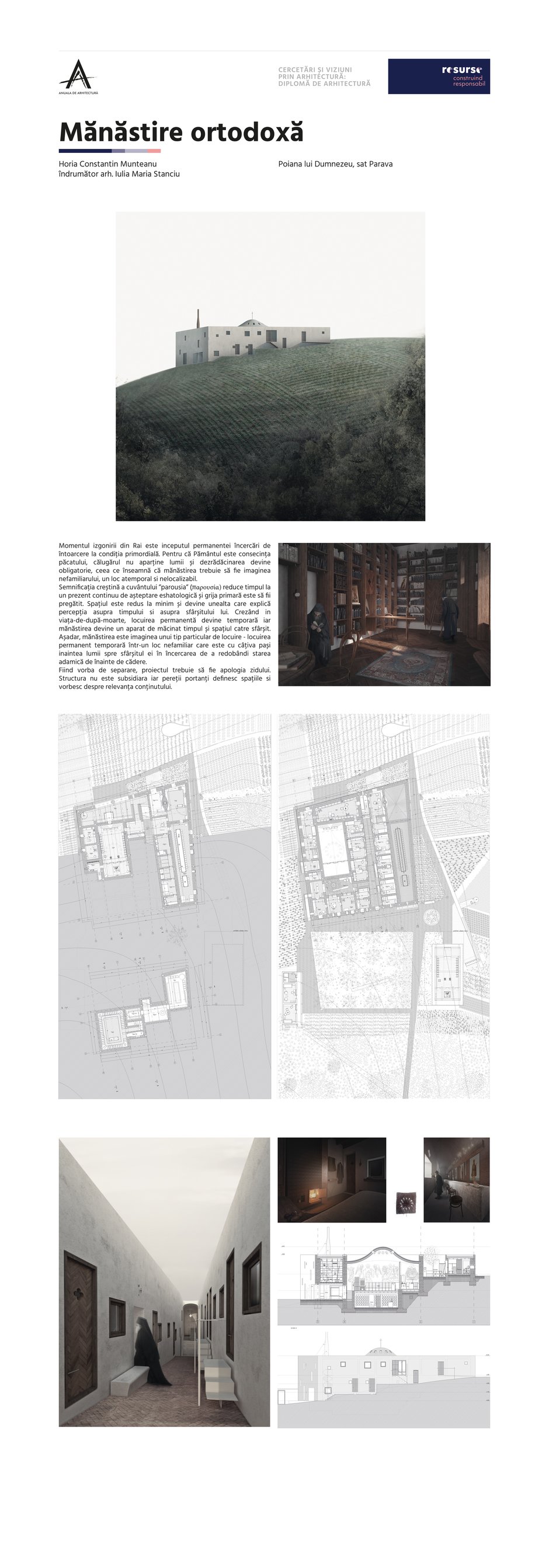Orthodox monastery

Authors’ Comment
From the moment of Adam and Eve’s banishment, there is a permanent search of returning to the primordial condition. As long as the world is the result of the sin, the monk doesn`t belong here anymore and the uprooting becomes mandatory. This means that the monastery has to be the image of the unfamiliar, a place that has no time and it doesn`t belong to a place.
The Christian meaning of the word “parousia” reduces the time to a continuous present of eschatological waiting and the primary concern is to be prepared. The space is reduced to it`s minimum and becomes the tool that explains the perception about the time and about it`s end. Believing in the life-after-death, the permanent living becomes temporary and the monastery becomes a space and time grinder and a world-ending device. So the monastery is the icon of a very specific way of living – a permanent temporary living in an unfamiliar place which is few steps forward in trying to regain the primordial condition.
Because it is about separation, the project has to be the apology of the wall. The structure is not subsidiary and the load bearing walls define the spaces and talk about the relevance of what is inside them.
- Regeneration: Balneo Center Gighera
- Building a community. A social-philanthropic settlement in Mostiștea Valley
- Tourist center
- Platform for the creative industries
- Orthodox monastery
- Terme Rudolf
- Holistic Health in the heart of Bucovina
- Penitentiary in Bărăgan
- Behavioural Health Center for Children
- Re - Assemblage
- Community Building In Barcut
